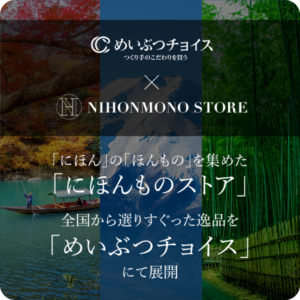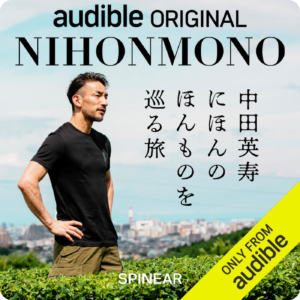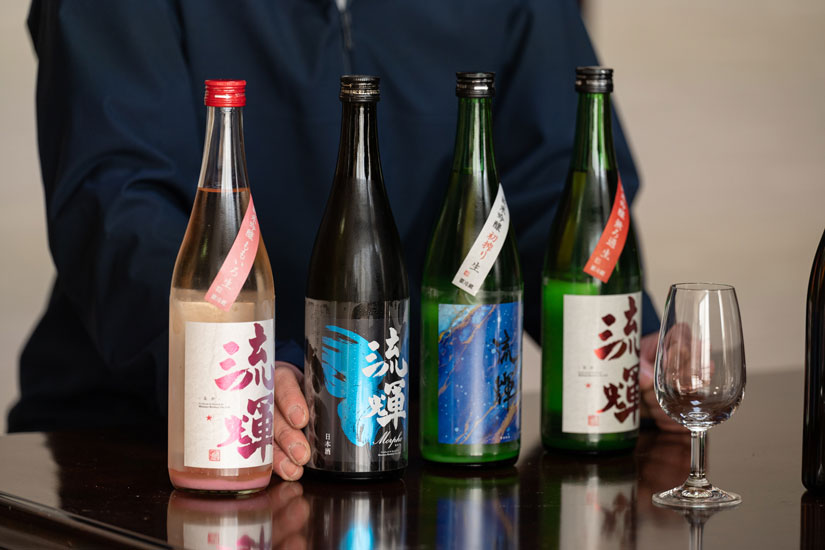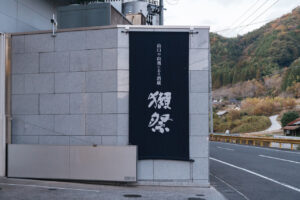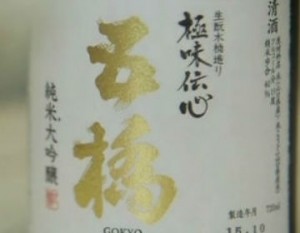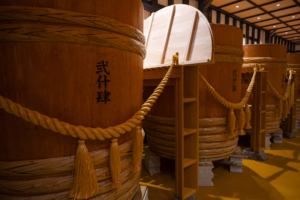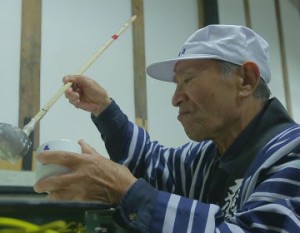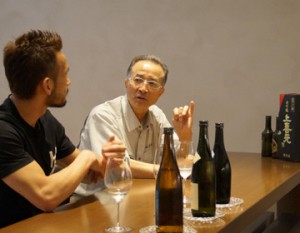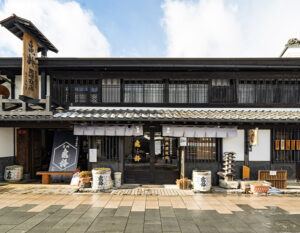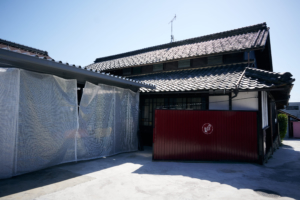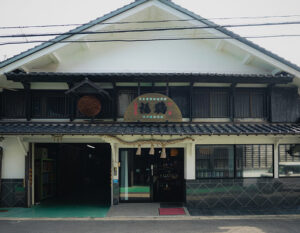Matsuya Sake Brewing Company is located in Fujioka City in southwestern Gunma Prefecture, bordering on Saitama Prefecture. The sake “Ruka,” which uses water from the Kannagawa and Ayukawa Rivers that gushes from the Mikabo Sankei mountain range, which is ideal for sake brewing, is attracting attention as an original sake created by the enthusiasm of the sixth generation brewer, Hiroyuki Matsubara, who is also the toji, the president of the company.
The Sixth Generation Envisions a New Gunma Sake
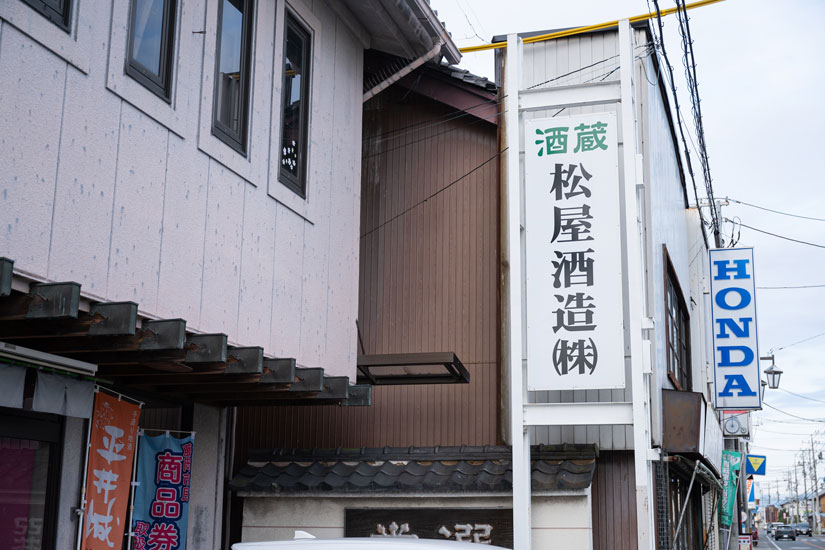
Fujioka City in Gunma Prefecture has a mild climate with mountainous terrain in the west and the Kanto Plain in the east. Matsuya Sake Brewery, which has been producing sake here since 1951, was originally founded as a rice wholesaler in Toyama Prefecture during the Edo period and began brewing sake in the late Meiji era. The brewery later moved to Fujioka City in Gunma Prefecture, which is close to the large market of Tokyo and blessed with a natural environment, and has been making sake that is suited to the locality of Gunma. After the previous master brewer retired due to old age, Hiroyuki Matsubara, the sixth generation brewer and president of the company, became the master brewer himself and has been involved in production ever since. With a production of only 250 koku, the small brewery produces sake that is made by hand in the traditional way, with a modern approach that is in tune with the times, offering a new kind of Gunma sake.
Returning to his hometown to fulfill the role of the eldest son, the sixth generation
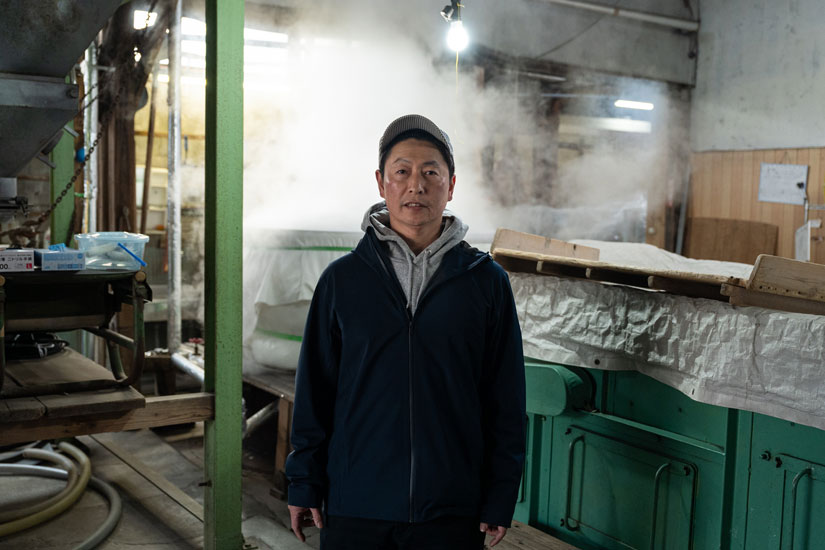
Born and raised in a sake brewery, Matsubara was not interested in sake making as a child, and after graduating from college, he began working for a street brand to pursue a career in fashion. He decided to return to his parents’ home and take over the family brewery.
He said, “At one time I ran away from home to do something different from the family business, but since I am the eldest son, I decided to take over the family business. I had a sense of fulfillment from having done what I loved in the outside world, so I honestly thought I would return to my parents’ house and do my best.
At the time, however, we were in the midst of the shochu boom. The brewery mainly produced sake for celebratory occasions such as elections and weddings, but Mr. Matsubara felt that this alone would eventually make it difficult to run the business. However, he felt that this would eventually become too difficult to manage. Since he was taking over the brewery, he wanted to make sake that would be sold at restaurants, and he began to think about creating his own original sake at the brewery.
I want to make Gunma sake that fits the times.
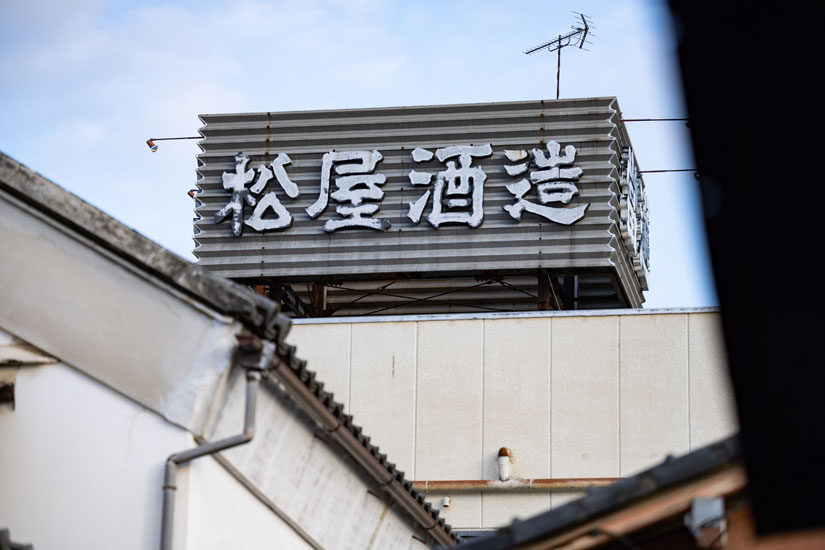
Mr. Matsubara joined Matsuya Sake Brewery and began learning sake brewing from scratch at the brewery. At the same time, in order to create his own original sake, he went to study at the “Red Brick Sake Brewery” in Oji, Tokyo (now the National Institute of Sake Brewing), which has contributed to the development of sake brewing in Japan, and learned from senior brewers at Gunma Prefecture’s technical exchange meetings.
At the time, the generation older than myself favored dry sake, and many of the breweries around us were producing it. However, as the number of senior brewers I met at the engineer exchange meetings and the number of brewers of the same younger generation as myself increased, the trend of sake preferred in the market started to change. The fruity, aromatic sake that I like is getting more attention.
In his search for sake that suited the times, he went to restaurants recommended by a toji he respected, read books, and actively sought advice. He was advised that “marketing is important, but at the end of the day, your own feelings are important,” and he decided to create a fruity, fresh sake that was becoming popular and had a flavor he wanted to drink.
Deciding on a Brand Name from a Child’s Name Candidate
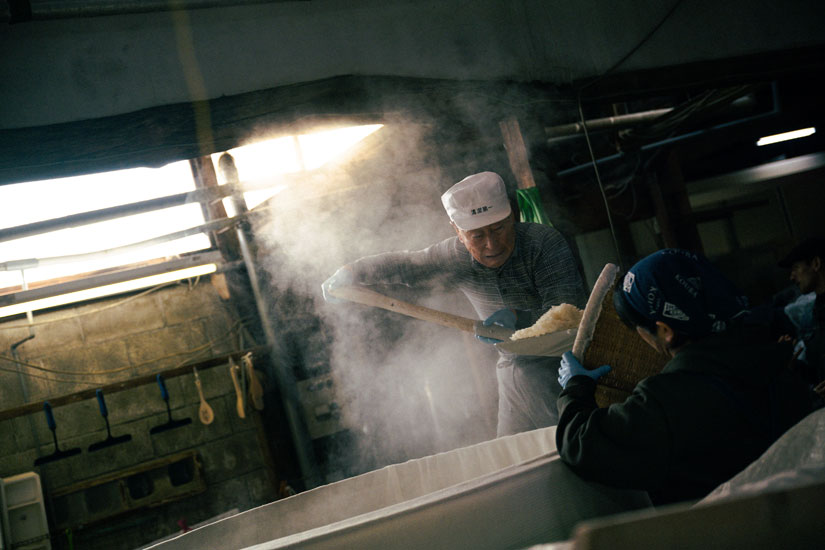
Mr. Matsubara decided that if he was going to make his own original sake, he wanted it to be fragrant and fruity, close to the kind of sake he had always dreamed of making. He imagined the taste of sake like “Jyushiyo” and “Houbiden,” which he had been shocked by when he drank them, and through a process of trial and error, he came up with the ideal name for the sake. When he brought the sake to the distributor, he was advised by the Matsuya Brewery to think carefully about branding if it was to be a new brand.
At the time, I had just had a baby, and I was thinking of a name for my child, and I found a name that fit the image of the sake I wanted to make, “Nagare Shine. We named our new sake brand “Ryu-ki”.
In addition to the existing brands “Tosei” and “Hiraijo,” the new brand name “Nagareki” has been added to the existing brands, and the brewery has launched its own brand. The words on the “Ryuki” label were written thousands of times by Mr. Matsubara himself, he says.
Sake brewing that takes advantage of the quality of the water
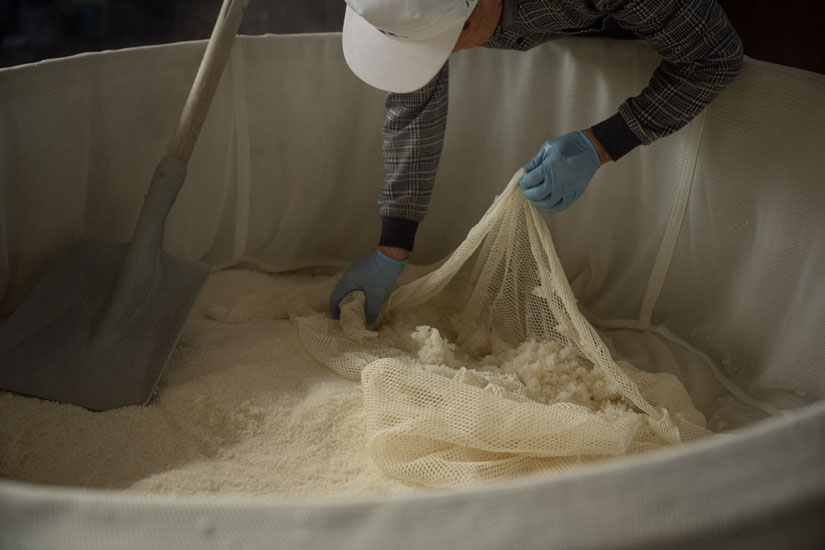
When making Nagareki, Mr. Matsubara’s first image was of a sake that would be enjoyed for its aroma. However, the sake produced in Fujioka did not have as much of an aroma as he had expected. The sake made in Fujioka, however, does not have as much aroma as one might expect, and yet it has a slightly citrusy, acidic flavor, he says.
We dig a well in the groundwater of the Kannryu and Ayukawa Rivers and use it as brewing water,” he said. The water is very soft, with a German hardness of about 6. For rice, we use Yamada-Nishiki and other sake rice suitable for our brewery, such as Niigata’s Gohyakumangoku.
At first, he had a hard time producing the sake he envisioned. As he repeatedly experimented with different types of rice and yeast and their compatibility with water based on various data, he gradually began to see changes in the taste of his sake. It was not the fragrant, fruity sake that he wanted to make, but he began to see the characteristics of Fujioka, a sake with a subdued aroma and a slightly citrus-like acidity that the region produced. I am now thinking of making “Ryuki” in a way that makes the most of this character.
Sake made with the same routine
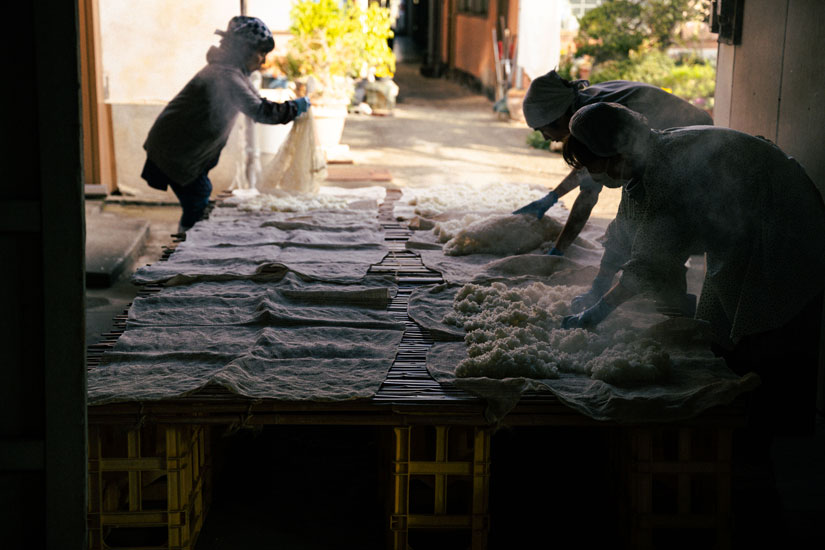
Matsuya Brewery is a small brewery with only five employees, including part-time workers. Because of the small number of employees, the brewery takes a longer production period, and they are conscious of following the same routine every year to keep the rhythm of the brewing process.
Although we have a small number of employees, we produce sake in small batches, sticking to traditional handmade methods in order to produce higher quality sake. In particular, the pressing process is carried out slowly and under pressure using an old-fashioned machine that has been handed down from generation to generation, resulting in a clean and gentle sake quality.
The traditional technique of koji making, which easily affects the flavor of sake, is employed. Steamed sake rice is exposed outdoors and exposed to wind to evaporate the moisture, while controlling the temperature to the desired level. In order to allow the fermentation of unrefined sake to proceed slowly at low temperatures, the rice is pounded for more than 50 hours to allow the mycelium to reach the center of the rice, producing a clean koji that matches the quality of the sake.
He began to think about pursuing refined sake by using traditional koji making that is not influenced by trends, and by changing the flavor of the sake by combining the two.
Creating sake that can be handled by restaurants
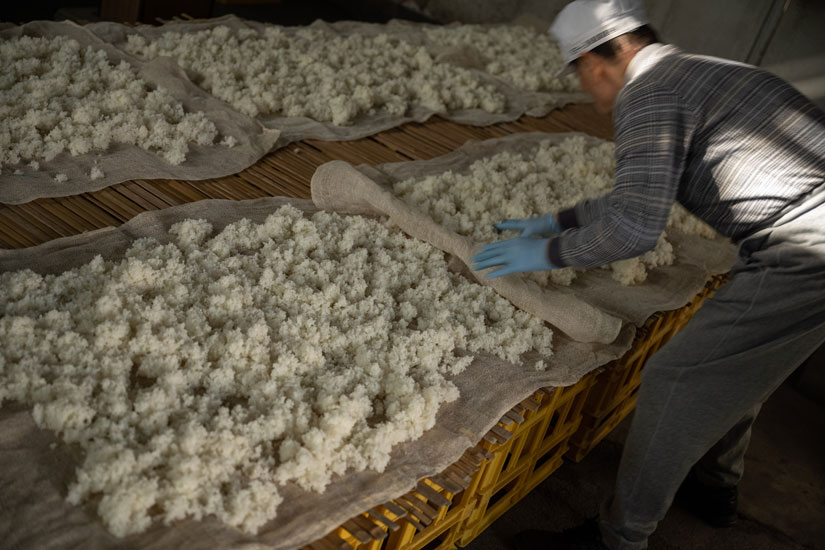
In branding Ryuki, Mr. Matsubara says that he had a strong desire for the sake to be sold in restaurants. He also tried a different approach to the sales of sake than what the brewery had been doing until now.
We decided to limit the distribution of “Ryuki” to only those dealers who are willing to sell it to us. We chose only those distributors who were willing to sell our sake, and we are still doing business with them today.
Limited distribution has the advantage of increasing the value of the brand and differentiating it. However, it also has the disadvantage of not being able to market the product unless the distributors approve of it.
When Ryuki was just starting out, there were few dealers who would accept his brand, and he was sometimes turned away, told to “go study more. There was even a distributor who finally accepted our brand after three years of trying,” says Matsubara.
Ryuki,” a brand created with his own ingenuity

Nagare Kiki” was created with the image of a fresh, fruity flavor that would flow and shine in the mouth, and it is now turning out to be exactly what the name implies.
There are still things I need to work on, but after 17 years of making “Ryu-Kiki,” I think I’ve gotten about 50% closer to what I’m aiming for,” he said. I think I am getting better and better, but in order to raise it another 50 percent, I think I need more experience, more ideas, and more effort than I am capable of at the moment.
Two years after taking over the Matsuya Brewery, he launched his own brand, Ryuki, which became popular mainly among restaurants, just as Mr. Matsubara had hoped, and is now gaining fans among the general public as well. The experience of creating an original brand from scratch, which Mr. Matsubara has been dealing with ever since he became toji, has had a positive impact on the other sake that Matsuya Brewery has been making for many years, and the future of this small brewery is beginning to look brighter.
